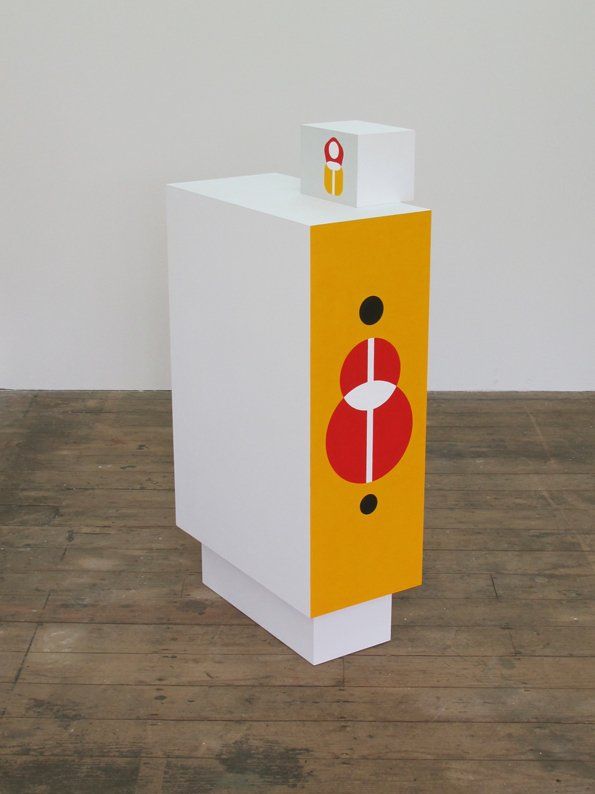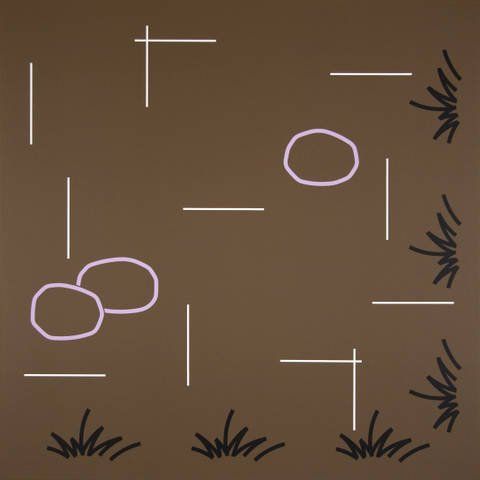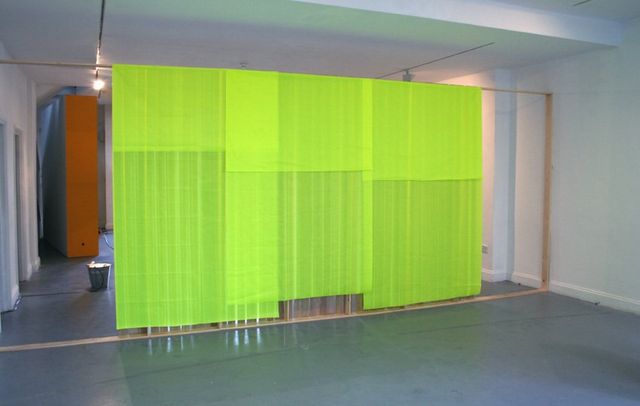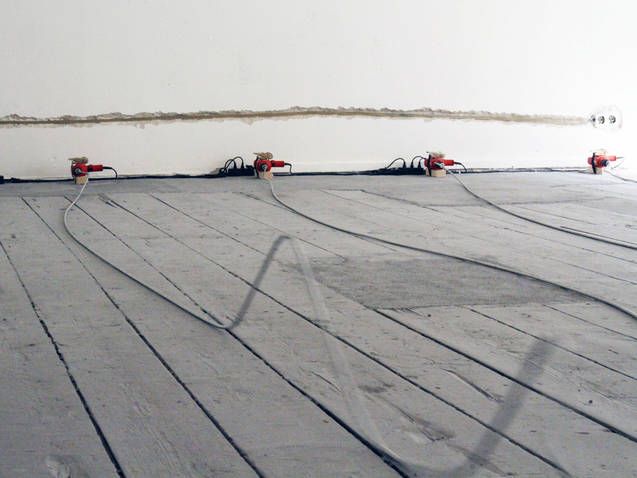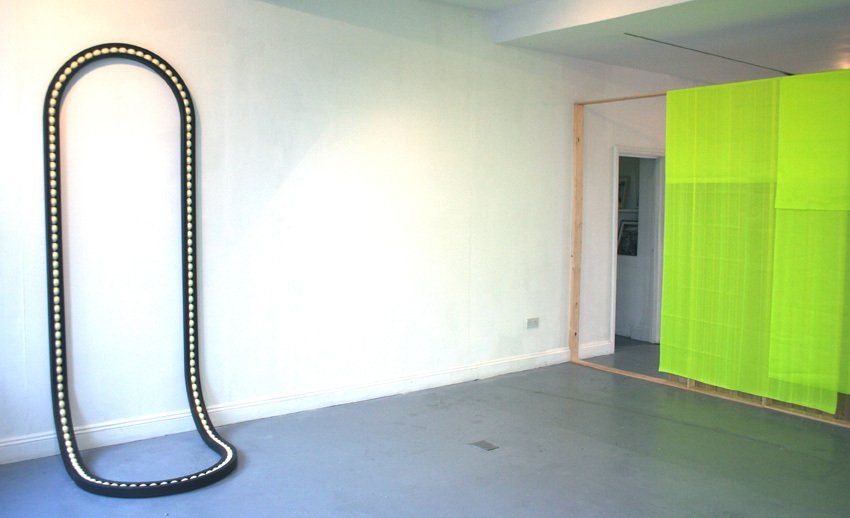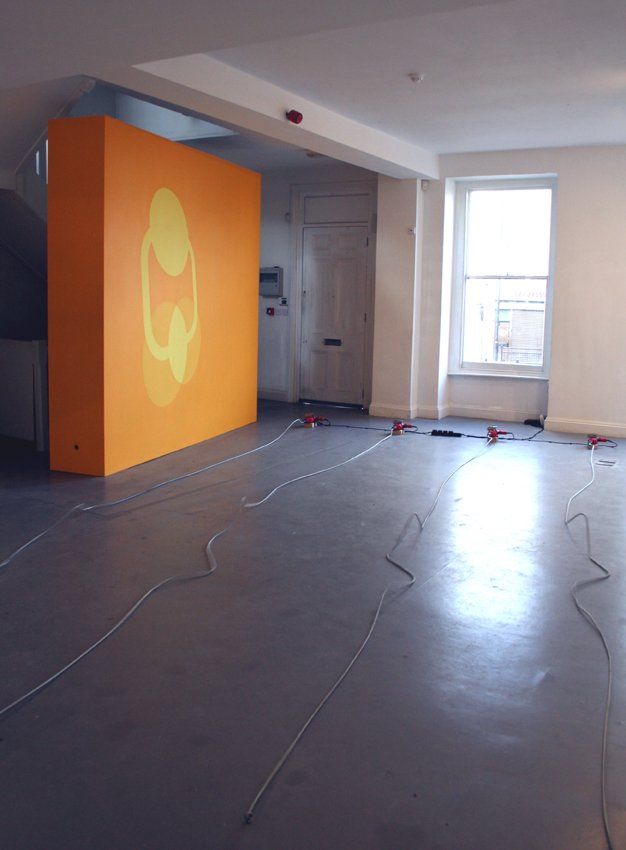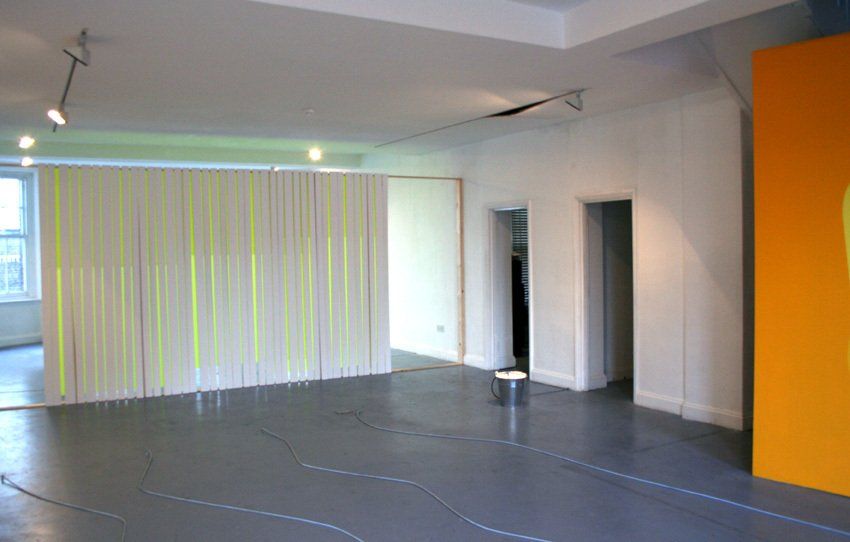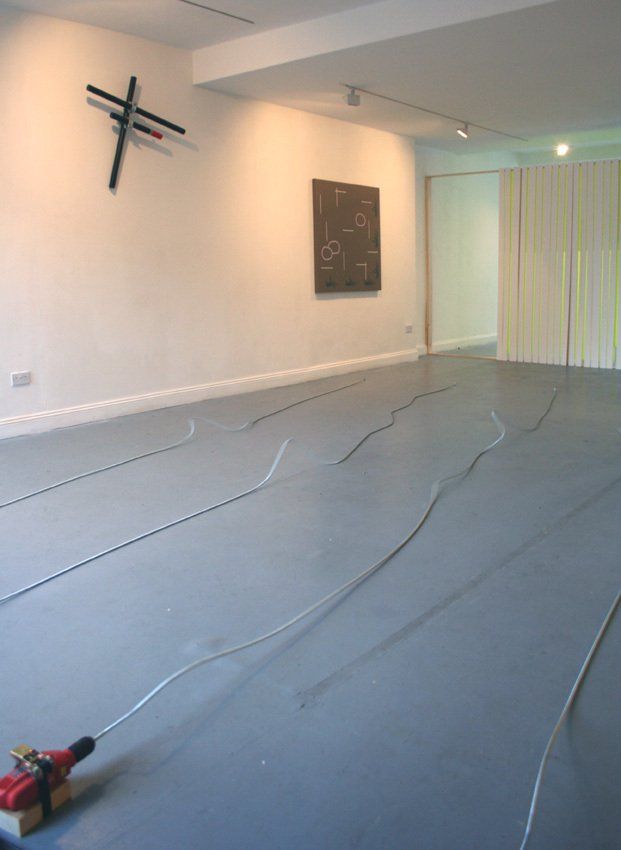CEDRIC CHRISTIE - ALISTAIR DUNCAN - GERARD HEMSWORTH
KAREN HENDERSON - BEN WOODESON
curated by Fieldgate Gallery
The American architect Louis Sullivan’s now famous maxim ‘Form follows function’ was one of the primary principles of Modernist architecture and design, and contributed to the geometric reductivism of Modernist painting and sculpture. This language has been revisited a number of times since, but recently artists have responded more irreverently. The result has been to allow very non-Modernists elements into the paradigm: fantasy, absurdity and humour, to re-claim and enrich this once hallowed ground. Some of the artists begin with function and allow its failure to become its form, while others create forms that can only aspire to function.
CEDRIC CHRISTIE
Cedric Christie’s Phoenix, a giant curvature comprising of a steel exoskeleton and snooker ball anatomies, brazenly wraps itself around the space that it occupies the playfulness of Christie's materials and also suggests the works' debasement of the sacrosanct ideology of Modernist sculpture. De-mythologised, the piece lurches onto the horizontal; a movement from wall to floor that is a literal and figurative 'bringing down' of monumental form. In the work that is made of scaffold tubes the aim is to remove scale from a material that is associated with a particular scale and development. To allow the form to become a support for colour and the surface to become space. Is the colour holding the shape, or the shape holding the colour. Courtesy of Flowers Gallery, London
ALISTAIR DUNCAN
Alasdair Duncan makes Signs for the Future (and designs for such). His signs are stand-ins, signifying things that do not yet exist: not futurological predictions, rather they are emblems of the not yet imagined. Duncan produces colour-saturated graphics applied across a variety of media. Duncan is broadly interested in making art that addresses the unknown and unknowable not without ambivalence, but as presenting positive, progressive opportunity. Duncan’s pieces are titled in the language of Je Zaum. Zaum (pronounced Za-oom) was a language coined by the Russian Futurist poets Velimir Khlebnikov and Alexei Krucheykh, combining the Russian prefix за “beyond, behind” and the noun ум “the mind, nous”. Zaum is described as a universal language, a language of indeterminate meaning that stands in for thoughts yet to be conceived.
GERARD HEMSWORTH
Gerard Hemsworth’s paintings are disconcerting and provocative in an odd, slightly uncomfortable way. He brings together signs and representations derived from modernist art alongside and integrated with signs and representations of cartoon like images derived from children’s colouring in books. Presenting pictorial and ideological contradictions to felicitate critical engagement. These representational works have the familiarity of both modernist painting and storybook pictures. He has developed a project that has allowed him to undermine the seriousness of high modernist art and cultural values, whiles at the same time providing a space that questions its possibility. His paintings are both insistent and subversive and question the values and assumptions that the viewer brings to the work. Courtesy of Laurent Delaye, London
KAREN HENDERSON
Karen Henderson’s current work has been informed by research into visual strategies for spatial occupation. She has been looking at camouflage as strategies of design which are intended to complicate how an object in an environment is read, misread or visually erased in order to understand how objects can occupy space in more tenuous and temporal ways. Henderson is interested in the point where an object integrates with a space and how this succeeds or fails. This body of work includes a group of objects which draw on the Dazzle camouflage designs employed during WWI to break up the visual coherence of large targets. Henderson is interested in how objects take up space and interrupt our visual field and in how much effort is required for this to happen over longer periods of time. The investment necessary seems to have political potential and how space is occupied and claimed and how objects are implicated in these actions, are central questions.
BEN WOODESON
Ben Woodeson’s works are deliberately confrontational; the pieces confront both the viewer and the exhibiting institution with their real or implied activity and consequences. The works are performative; they inhabit a particular moment of possible action and subsequent reaction. Their physicality aims to instigate an intense and visceral relationship with the viewer and the gallery architecture. Threatened ripples of consequence are sent throughout the sculptures and audience alike. Manipulating everyday materials within a space, the works keep the viewer poised in a state of slight suspense, challenging them to respond to a unique and evolving environment of cause and effect. The works spin, roll, wobble, fall, flick, collapse, shatter and even ignite… but when? Since 2009 Woodeson has been making the overtly confrontational Health and Safety Violation series; some works are deliberately dangerous, others only sound it…
Fieldgate Gallery Ltd.
copyright Fieldgate Gallery, 2021, all rights reserved

